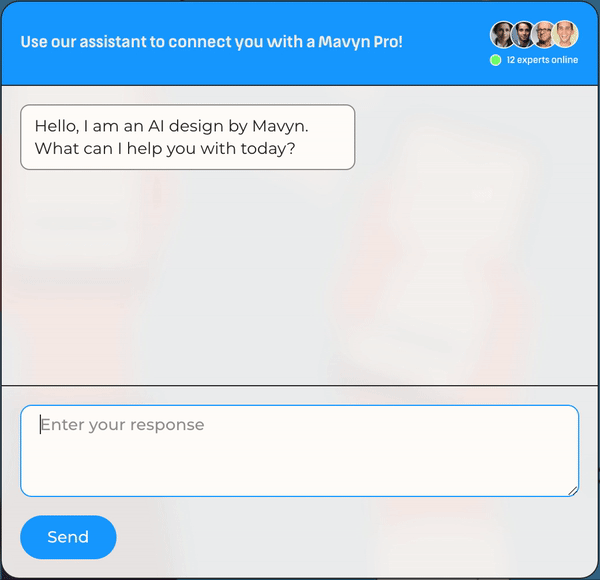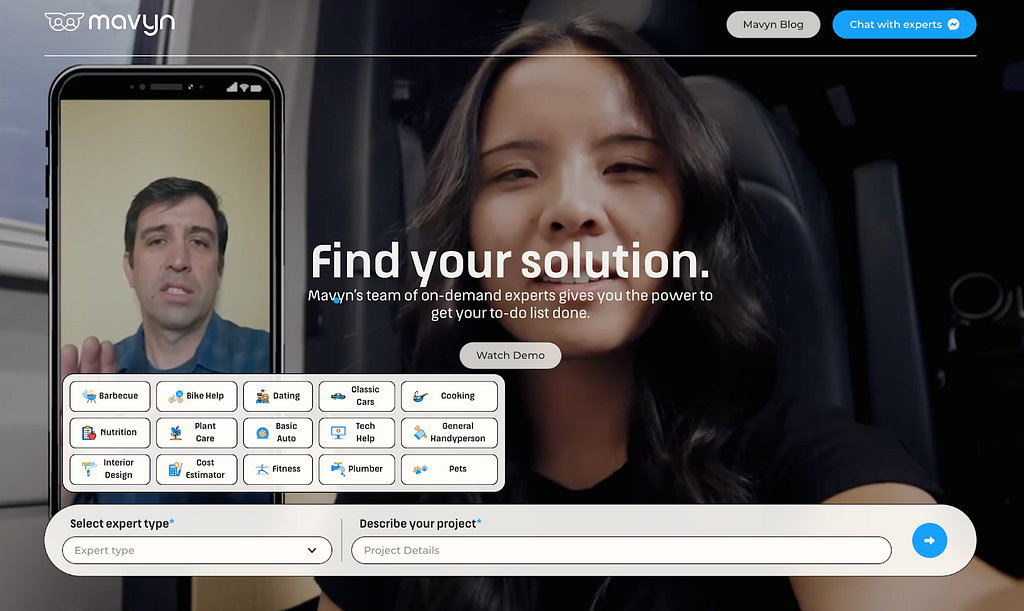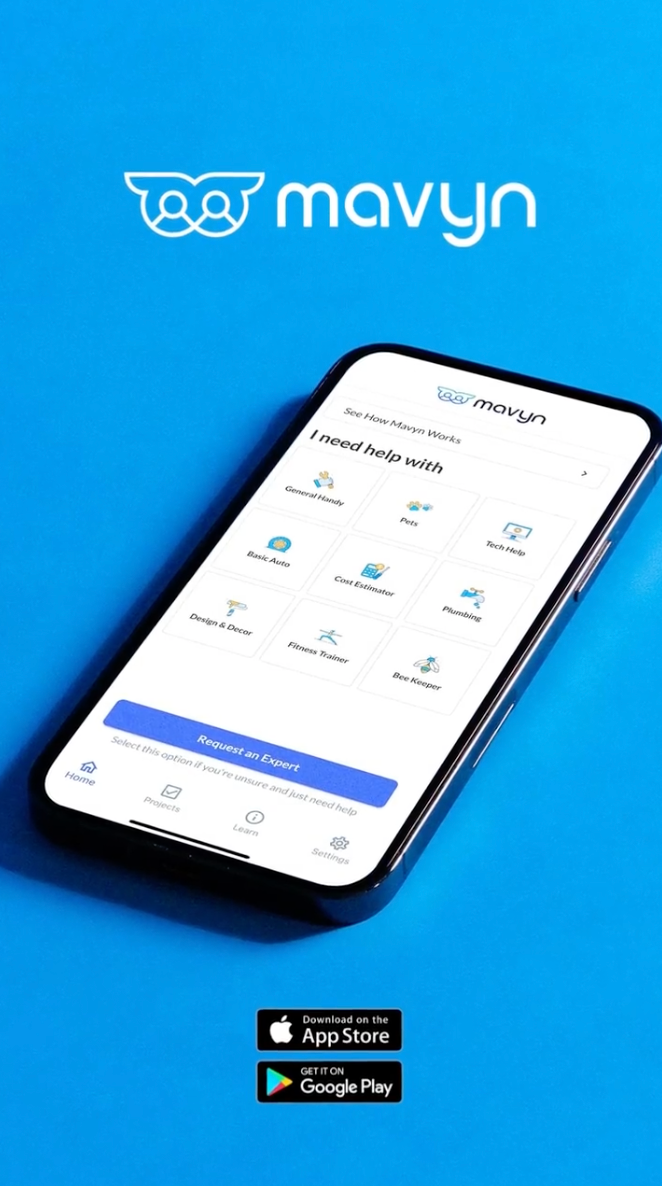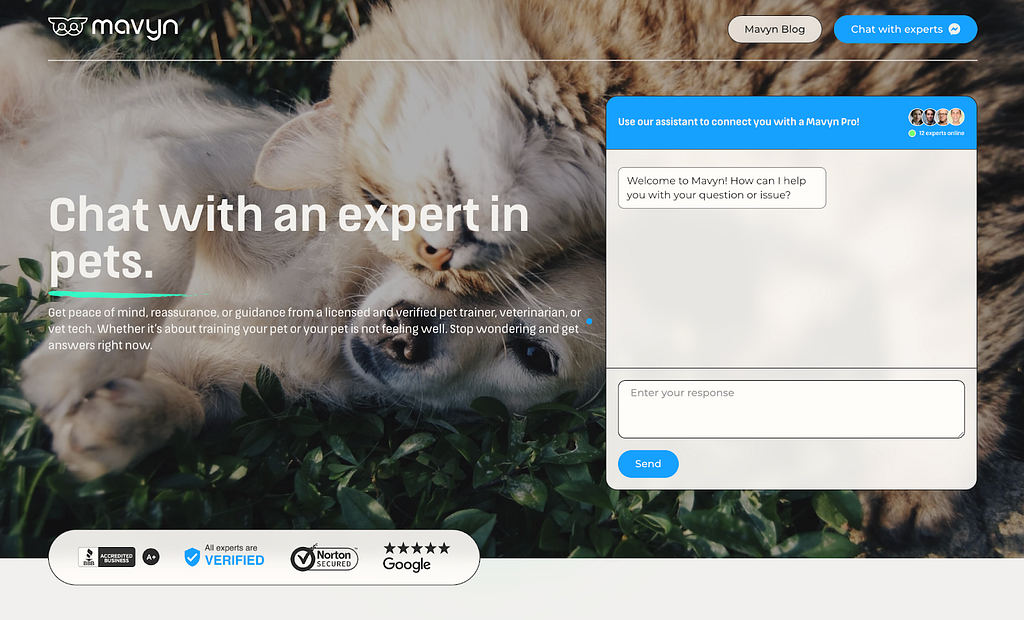This content originally appeared on Level Up Coding - Medium and was authored by Trey Huffine
How we’re using AI to make search engines obsolete and build a product that empowers anyone to solve any problem
An interview with mavyn.com’s CIO, Carrington Junior
Carrington shares how Mavyn is building an experience to solve any problem. If you’ve used ChatGPT, you’ll quickly understand Mavyn’s approach and what they’ve learned over the past two years building an AI-driven Q/A chat experience to solve problems. What makes Mavyn unique is that the chat is with a human subject matter expert, and the AI lives alongside the expert to quickly and intelligently propose responses.

What is your name, role, and brief career background?
I’m Carrington, the CIO of mavyn.com. Before Mavyn, I worked in the hospitality industry for about 5 years before starting my own IT consulting business (Information Age Consulting, LLC) where I started working on centralizing scale hospitality clients' data infrastructure. I quickly moved into the pricing space and developed a dynamic pricing platform that moved revenue from 108M to 130M annually with the same assets. After that, I have worked on a couple of AI contracts as well as CIO for a hard goods company (Plant Love Naturals). I have developed and implemented AI infrastructure for clients, mostly in the space of computer vision and predictive analysis.
What does your company do?
Mavyn combines AI and subject-matter experts to help people solve their problems through a chat experience. As an analogy, you can think of us as a productized version of ChatGPT combined with human experts. This combination allows any problem to be solved of any complexity. The product can be delivered through chat, voice, or video — where voice and video are only human-driven.
We began working on Mavyn nearly 2 years ago by utilizing GPT-3. We are doubling the number of solved problems month-over-month, and the success of ChatGPT has validated our delivery model. We’re incredibly proud and excited about being able to build a solution that we believe is the future.
What makes your company unique?
We believe the combination of sophisticated AI and human experts empower anyone to solve any problem. Unlike the current method where you use a search engine to wade through ads and weak articles stuffed with affiliate links, Mavyn enables 1 question and 1 answer, so you get exactly the information that you need.
This model provides incredible efficiency gains because people can solve a problem of any complexity without wasting time — no more reading endless blogs or watching hours of YouTube videos.
The combination of humans and AI is what allows us to create a powerful feedback loop where our AI can lean significantly faster:
- Question from customer
- AI proposed response
- Response enhanced by a domain expert
- Feedback from the user on the value of the response
- Re-tune the model with expert validated data
- Repeat

What motivated you to pursue working on this?
This concept can be a wide spread solution to helping people get on with their lives. Whether we can help with a pet issue or a home project, Mavyn can help empower people to live better lives, and that’s something I have always been a supporter of.
How did the company start? What went into building the initial product?
We began brainstorming Mavyn at the beginning of 2021. Our initial belief was that customers would want a video chat experience, similar to how they used Zoom during the pandemic, to solve their problems. We built a mobile app and integrated video chat SDKs. We quickly learned that our customers preferred text chat-based experiences, and we iterated quickly in early 2022.
The next iteration started as a lightweight chat experience delivered through the web. Then once the problem is defined, the user can select how they connect with the expert.
Since then we have more than doubled volume month over month. This is a big win for two reasons: 1. It’s much easier for experts and customers to handle text conversations 2. Most importantly, it can be heavily driven by text transformers which in turn can be optimized endlessly by professionally validated data.
What technology stack do you use, and why did you choose this stack?
- The mobile app is built using Flutter/Dart.
- The web experience uses React via Next.js and TypeScript. We also have some pages built using Webflow.
- Our backend uses micro-service architecture. We have a GraphQL API for the client, and services written in Python and Node.

What is your business model?
Mavyn is currently free, and we anticipate this to always be true for the AI+human expert chat experience. We’re exploring models to charge for the video chats or B2B partnerships.
What are some of the most interesting problems you’re solving?
- We launched a mobile app that was difficult to gain traction (possibly because of our marketing focus) but pivoted to a web solution that was closer to the customer initiation point allowing us to shorten the cycle of lead acquisitions and ultimately resulting in a successful increase in volume of customer solutions provided.
- The hardest part of what we are trying to do is giving customers near real time solutions to any problem. The key roadblocks here are the technology used to provide solutions and the availability of our professional staff. Segue below….
- We are currently developing state of the art Artificial Intelligence solutions to help people get immediate answers to their questions.
Question: What will the world look like once your company achieves its vision?
We believe that there will eventually be a world without search engines. You’ll open your computer, ask a question, and immediately get an answer. This will make people much more efficient. Our goal is to empower people to take control of their lives and spend their time doing what they love, not aimlessly looking for answers on the web.
Question: What does a typical day look like for you?
- 25% meetings with our team creating and following up on action items
- 50% development and support of internal systems
- 25% R&D of new technology
Question: Are there any technologies or tools you’re playing around with right now that you’re excited about?
We are developing an AI chatbot based on the OpenAI Davinci class GPT-3 network. This has been a very exciting process developing a solution that can logically think about the problem a person is asking in text or voice and generating real and useful responses to quickly help customers.
To learn why we’re using GPT-3, here is a brief explanation in how it compares to chat GPT:
“The major difference is that the GPT-3 protocol is much larger than ChatGPT. The former has a whopping 175 billion parameters making it one of the largest and most powerful AI language processing models to date, while the latter has 20 billion parameters. This is because ChatGPT has been specifically designed to generate human-like text in the context of chatbot conversations. Accordingly, it has been trained with specific datasets of chatbot interactions. This is likely one of the reasons there are so few parameters. GPT-3 is trained on massive internet datasets without tuning towards a chat experience, therefore it is better at solving complex questions than its ChatGPT counterpart.” - ghacks.net

Question: Describe your computer hardware setup
- DL workstation: Windows OS
- Intel Core i9–10900X — Core i9 10th Gen Cascade Lake
- X2 Nvidia RTX 3090 W/SLI bridge (combined 48GB VRAM)
- 2tb SSD + 512 SSD boot drive
- 6X 32GB DDR4 ram 3200mhz
- Hybrid Liquid/fan cooled
- Wizzo: Debian Linux
- AMD threadripper
- 4X RTX A4000
- 3X 2TB SSD
- Hybrid Liquid/fan cooled
Describe your computer software setup
Editor
- VS Code
Source Control
- Github
Communications
- Gmail
- Slack
Hosting/solutions
- Heroku
- Hubspot
- Twilio
- Streamlit
APIs
- Google Analytics
- Hubspot
- Twilio
- OpenAI
How do you get into a flow while coding?
- Caffeine? Coffee
- Music or silence? Music without vocals
- When are you most productive? Morning
- What portion of your day do you spend coding? 70%
- Where are you most productive? Home office and remote beach/pool/coffeeshop
- Are you reading any books at the moment or have one you’d like to share? Meditations: A new translation
Do you have any advice for people who are just starting out?
Don’t get stuck in a mentality that it’s easier to do something with a language or platform you are already familiar with. While you may not need to learn a new process with existing tech you also are working under the assumption that what you are currently using is the best. The tech world is so quickly expanding that you may find an existing or simpler solution even if you checked last month.
Where can we go to learn more?
Visit mavyn.com to use our free service and solve one of your problems!
➡ ️️https://www.mavyn.com/

Level Up Coding
Level Up is a community of 3 million monthly developers (learn more and follow or read more startup interviews). We also work with the best startups and most innovative tech companies 🔥
- Are you a developer? Have the best companies request to hire you
➡️ Join the Level Up Talent Collective - ➡️ Hire FAANG-caliber Engineers
- ➡️ Interview Request Form to have your company interviewed
We also provide free tools for developers to grow their careers: coding interview course, automatic resume builder, portfolio API
Follow us: Twitter | LinkedIn | Newsletter
How we’re using AI to make search engines obsolete and build a product that empowers anyone to… was originally published in Level Up Coding on Medium, where people are continuing the conversation by highlighting and responding to this story.
This content originally appeared on Level Up Coding - Medium and was authored by Trey Huffine
Trey Huffine | Sciencx (2023-01-10T19:58:18+00:00) How we’re using AI to make search engines obsolete and build a product that empowers anyone to…. Retrieved from https://www.scien.cx/2023/01/10/how-were-using-ai-to-make-search-engines-obsolete-and-build-a-product-that-empowers-anyone-to/
Please log in to upload a file.
There are no updates yet.
Click the Upload button above to add an update.
